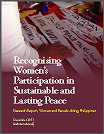While all appears to be tranquil in Bangkok at the moment, media activists are taking advantage of the present peace to unearth and untangle long-standing issues. One of them is the 20 per cent allocation of frequencies for community radios.
It is said that the country currently has some 6,000 community radios that are operating without any license but only the basic principles of the 2007 Constitution. But the “long vacuum” in the regulatory laws and mechanisms for community radio now pits these community radios against each other. While all agree that they be given temporary licenses to operate for a year, it is not clear what will happen in 2010 when these licenses expire and if the 20 per cent frequency allocation for community radios becomes a reality.
Yet a closer assessment reveals that both minor and major bureaucratic processes that need to be reconciled so as to put a set of finite resources to good use. The present confusion can be traced to the contradictions that have accumulated with the frequent changes of leadership and laws in less than a decade. For media activist Supinya Klangnarong, today is the best time to start untangling the mess. “Without starting, we will only come back with the same situation but one that has become even more messy,” she remarked.
The 1997 Constitution provided that 20 per cent of the frequency spectrum be given to community radios in the country while entrusting the National Broadcasting Committee (NBC) to identify community radios and regulate their use of these frequencies. But the NBC only remained in paper as its creation was hindered by various political developments, including former Thai Prime Minister Thaksin Shinawatra's war with the media.
By the time he was ousted, the 2007 Constitution was enacted and remains Thailand's fundamental law today. Although it continues to guarantee the basic principles of freedom of expression and media freedom, the 2007 Constitution has lost the wording on the 20 per cent frequency allocation for community radios. Moreover, it facilitated the approval of the 2007 Broadcasting Operating Act which envisions the merging of the broadcasting and telecommunications regulatory bodies and mechanisms of the country.
While the recent laws seem to be forward looking, they cannot match the pace of the installation of community radios across Thailand. From 2006 to 2009 alone, the number of unlicensed radios has soared from 3,000 to 6,000 that signals in some places often overlap. Less than 500 of these are said to be bonafide non-profit and independent radios and are therefore more keen to campaign for the 20 per cent frequency allocation.
“The real community radios are now the minority. We are fighting among ourselves,” described Klangnarong who now wears two other hats, a civil society member of the Parliament's drafting committee and civil society representative in a similar committee at the National Telecommunications Commission (NTC).
The latter is currently outlining the criteria in providing temporary licenses to radio stations while the Parliament is set to reinsert a clause on the 20 per cent frequency allocation for community radios. When asked what makes up a community radio, Klangnarong said that it is one that is mainly “non-profit and non-commercial.” But this definition is now being contested by much of unlicensed radio who would like to operate legally but not at a very high cost.
She recognised though the contribution of the majority of unlicensed radios particularly in diversifying news at local levels. “Local operators are good as they break the media monopoly especially in the provinces. I also understand their situation because it was not their fault that there was no law. But we need to find a balanced solution.”
Sources:
Interview with Supinya Klangnarong, Centre for Popular Media Reform on 15 July 2009
Bangprapa, Mongkol (10 July 2009). “Thailand: Radio groups demand 20% of frequencies.”





 The
The 
 Isis Resource Center holds one of the largest feminist collections of materials in the Global South. With 40 years of publication experience, Isis holds a vast collection.
Isis Resource Center holds one of the largest feminist collections of materials in the Global South. With 40 years of publication experience, Isis holds a vast collection.